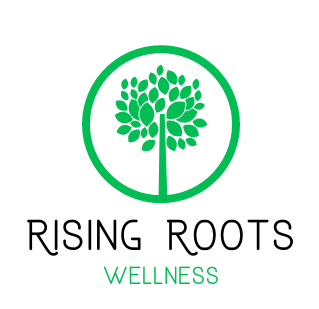How To Choose the Safest Sunscreen This Summer

Summer is in full swing!
It took awhile to arrive in Wisconsin, but most of our days are hot and sunny now and I LOVE it. Bare feet, having all our windows open, the ease of just opening the door and running outside with the kiddos (minus spending an additional lifetime 15 minutes putting on all of our hats, gloves, and coats- I’m in! We’ve definitely had our muggy, sweaty days, but this girl has no complaints.
Our family tries to spend as much time as humanly possible hanging out here in the summer:

My parents own a tiny slice of heaven on this lake. It’s everyone’s happy place! Especially when we can be out in the sunshine all day, from morning coffee to sunset cruise. Days like that require plenty of water and lots of sunscreen, too. I am typically the one reminding everyone to screen up (and rescreen- probably not a word, but since I say it 20 times a day when we’re by the lake, let’s just roll with it!) throughout the day.
Did you know that the sun’s rays are even stronger when you’re playing in or on the water? You may not notice the effects as quickly if your body is cooling off while going for a swim, but the sun reflecting off the water adds an extra hit of UV exposure.

Is the sun peeking in and out of the clouds all afternoon? Still important to use your sun protection! Up to 80% of the sun’s rays can pass right through the clouds, so your skin can still be damaged, even on a somewhat overcast day.
As a devoted label reader, it’s concerning to hear about the safety concerns surrounding sunscreen ingredients. This is one of those situations where we automatically think that such a crucial product like sunscreen must be safe.
Unfortunately, that’s just not the case.
There are two types of sunscreen: chemical and mineral. Most of the options available to you at a big box store or drug store are going to be the chemical versions. Let’s break down why these aren’t as safe as we might think.
Oxybenzone
Oxybenzone is one of the most common active ingredients in chemical sunscreens. It is also something you absolutely do not want anywhere near your body. A potential hormone disruptor, it’s been linked to early puberty in girls, low sperm count and male infertility, and an increase in hormone related cancers. It may contribute to a higher risk of endometriosis. Also, it can be highly allergenic, causing nasty and painful skin reactions.
The worst part, though, is that children may be vulnerable to higher absorption rates and accumulation of the chemical in their bodies. No thank you!
Octinoxate
Another ingredient that you’ll frequently see on sunscreen labels is octinoxate. This substance contains sulfuric acid and methanol (a petroleum byproduct). Octinoxate is considered toxic to coral reefs- it can cause heavy bleaching even at low concentrations.
Now, you may not live anywhere near a reef- I don’t either. However, if this substance is so bad for any living organism, it stands to reason that the plants and animals in the lake I love so much probably don’t like it either.
Another big issue with octinoxate is how easily and completely it absorbs into the body through the skin. There’s a risk of it bringing other “stowaway chemicals” along with it. For example, if a product contains parabens, those might be coming right along with it. Less than ideal!
Avobenzone
This one is apparently not so bad on its own, but it does break down quickly in the sun. To stabilize it and make it last longer, sunscreen manufacturers add a substance like octocrylene- another known endocrine disruptor that releases free radicals.
I know this list is getting long, but bear with me! Last one and then we’ll be on to the options you can feel good about using on yourself and your family.
Homosalate
Homosalate is present in almost half of chemical sunscreens. Like the others, it can mess with the endocrine system and cause all kinds of hormone related issues. This substance can also carry other chemicals along with it on its way into the bloodstream, same as Octinoxate above.
Okay! Done with all the nasty stuff! You might be wondering at this point,”What am I supposed to do, Jacki? Just stay inside my whole life?!?”
No, no! We’ve got options that still allow you to get out into nature and enjoy all it has to offer.
Mineral sunscreens are considered far and above to be a safer choice than their chemical cousins. The two main active ingredients that you’ll see in mineral sunscreens are zinc oxide and titanium dioxide. These sit on top of the skin to deflect the sun, rather than absorbing UV rays (as chemical sunscreens do). Zinc has been cited as having less than 0.01 % skin penetration.
As I said above, zinc and titanium oxide are touted as the safest sunscreen option; however, there is some risk for adverse reaction if the product is inhaled. This just means you need to take extra caution if using a spray or a powder version.
At this point, it’s not that easy to find a great mineral sunscreen at a big box store. Literally all I found (among allll of the options at Target) was their generic brand (the kids and I don’t love the consistency) and some spray brands that were, confusingly, geared towards a “glowing” tan. Hopefully, as more and more people demand safer personal care products, that will change. Until then, I’ll be buying my sunscreen online.
Here are some highly reviewed options I found that won’t gouge your wallet:

Badger Clear Zinc Sport Sunscreen- SPF 35
Alba Botanica Sensitive Mineral Sunscreen- SPF 30
Aveeno Positively Mineral Sensitive Skin Sunscreen
and a version of the above Aveeno product specifically for your face.
Don’t forget how effective it can be to wear clothing that covers up some of your skin (like a lightweight, long sleeved shirt or rash guard), pop on a hat, and take a shade break once in awhile!

Wishing you happy, sun-drenched summer days!
